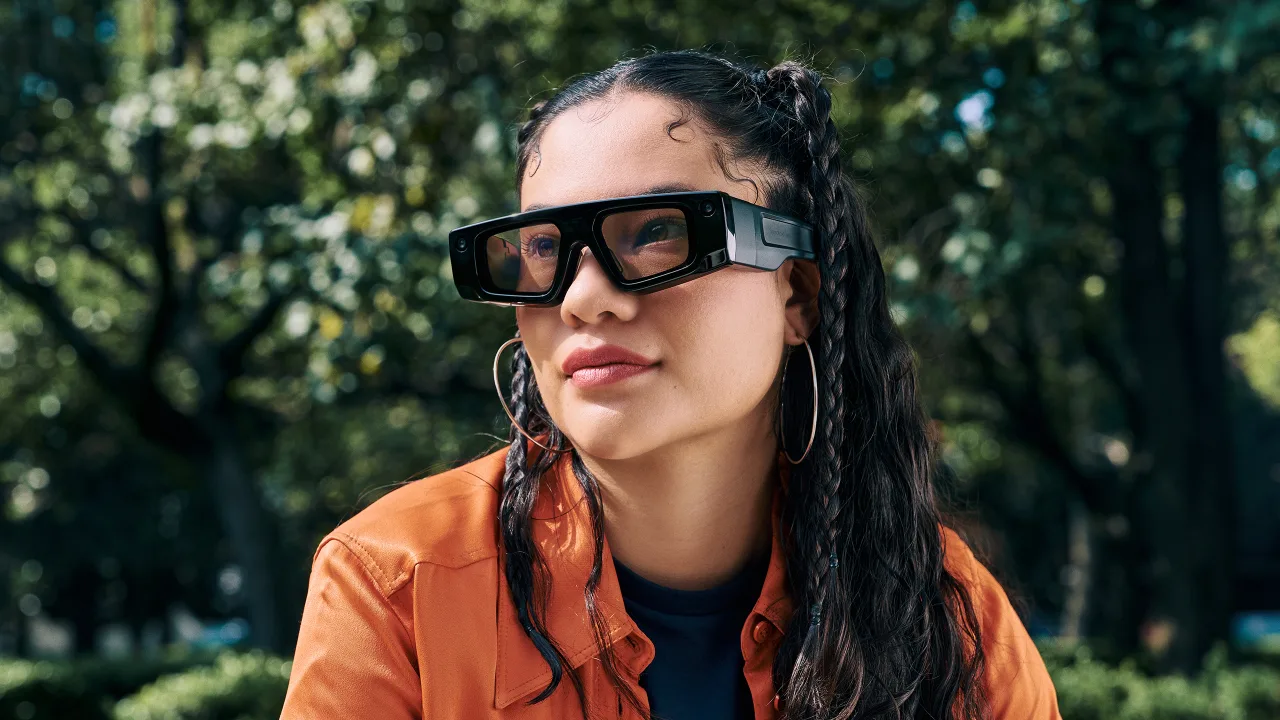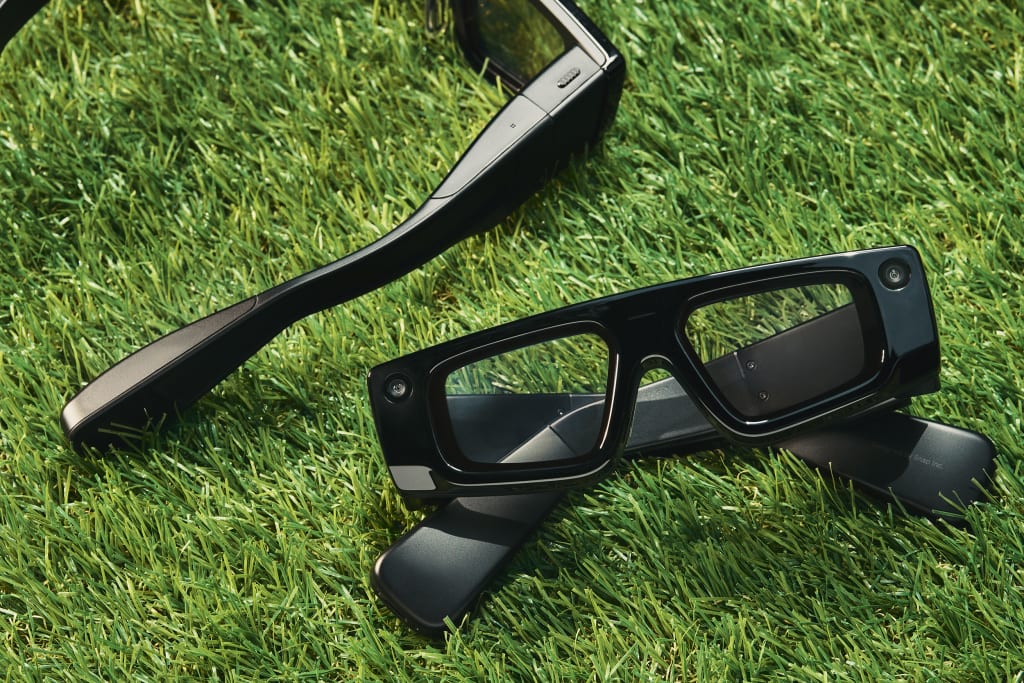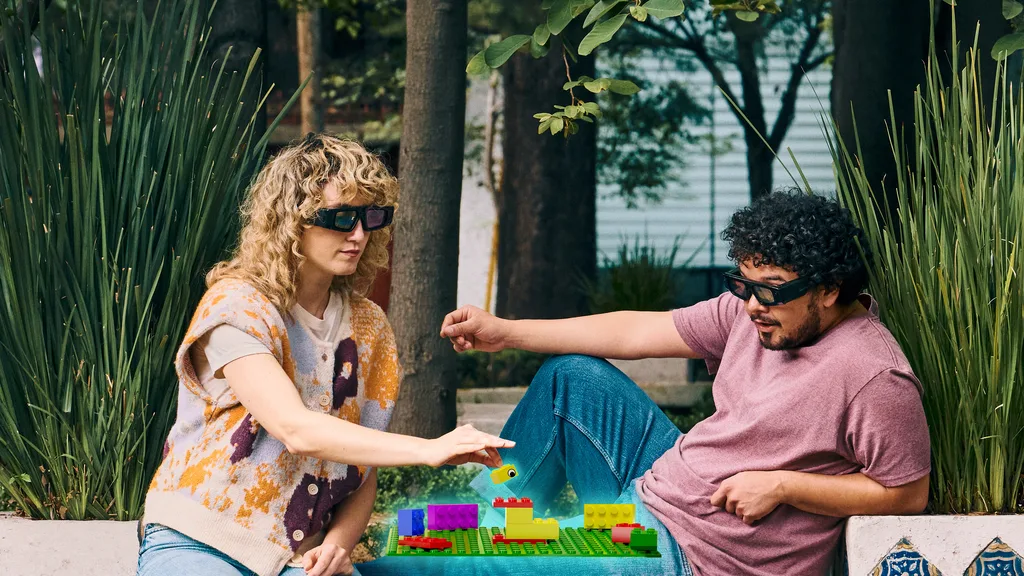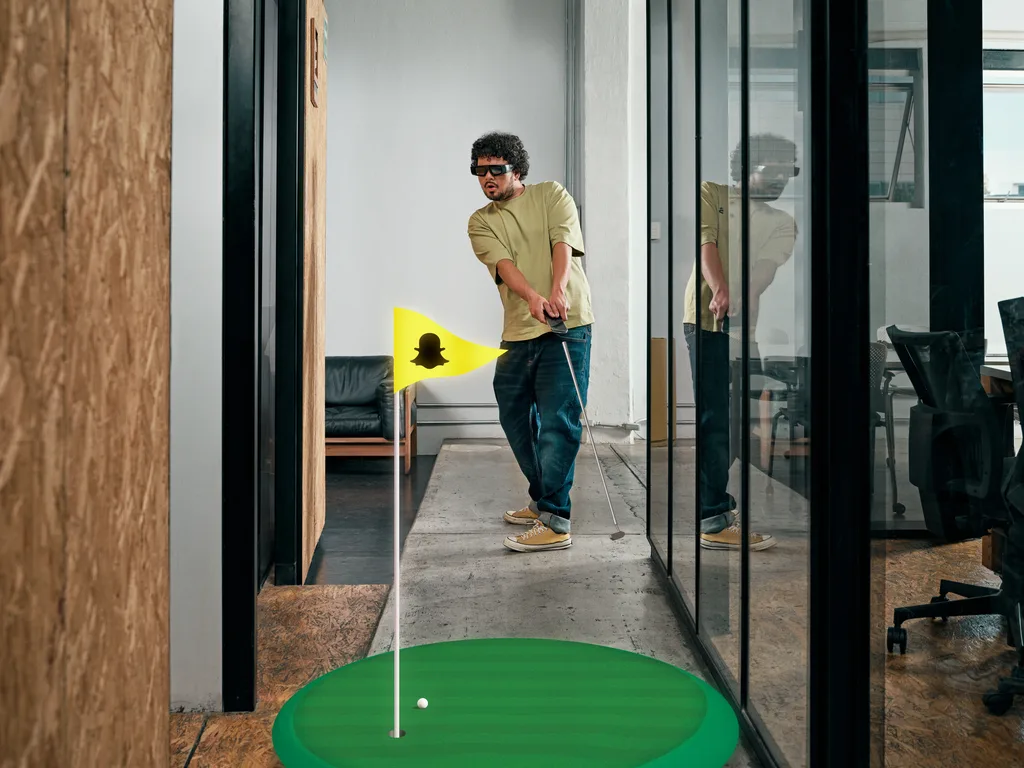Snap’s new AR Spectacles are fun. Too bad you can’t get them (yet)
We may yet live to see the day when it’s perfectly normal to see the world through eyewear that blurs the line between physical reality and digital imagery. But instead of coming into focus, the question of how we might get there has become murky. We do know that the metaverse bubble has definitely burst: Even Meta is downplaying the hype by pitching its Quest headsets as AI-powered mixed-reality devices, a less out-there concept. Meanwhile, spatial computing—Apple’s term for what it’s creating with its Vision Pro headset—might be Apple’s tiniest niche for a long time to come. And then there’s the augmented reality experience offered by Snap’s Spectacles. [Photo: Snap] If you kind of forgot that Spectacles existed, or at least that they involve AR, that’s understandable. The high-tech eyewear made its biggest splash back in 2016 when the original version launched as a near-impulse item at $130 and was even sold from traveling vending machines. But Spectacles didn’t do AR until 2021, when Snap unveiled a fourth-generation version—simply called “the new Spectacles”—that was more experiment than product. Instead of being for sale, it was available only to a select pool of creators. More than three years later, Snap is back with its fifth-generation Spectacles, which it’s unveiling at its Snap Partner Summit conference today. Still best known for its Snapchat ephemeral messaging app, the company has been through a lot lately, including multiple rounds of layoffs and a huge drop in its stock price. Last year, I wrote about its new initiative to power AR features for enterprise customers such as Men’s Wearhouse; months later, it shuttered that operation. Just being a public company principally involved in monetizing eyeballs through advertising is not getting any easier, though cofounder and CEO Evan Spiegel pointed out in a recent letter to employees that Snap has reversed two years of declining revenue growth. So the fact that Snap continues to invest in Spectacles—rather than focusing entirely on buttressing Snapchat’s fortunes—is notable. Especially since Spectacles still isn’t back to its early days of being a true commercial product. For now, Snap is offering it via subscription service to developers intrigued by the opportunity to write AR apps (or, in Snap parlance, lenses) for the platform. The price of entry is $99 a month, with a one-year commitment. [Photo: Snap] Spectacles may still be a bit, well, speculative, but Snap already has deep relationships with developers. Hundreds of thousands of them have used its Lens Studio to create millions of interactive AR effects inside Snapchat that have been viewed trillions of times—potentially providing a springboard for finding Spectacles’ killer apps. The new glasses offer ”a really compelling developer experience, and so that’s where we’re starting,” says Snap cofounder and CTO Bobby Murphy. “But certainly, our goal is to collaborate with our developers and support them as we build towards a more consumer-oriented device.” Unlike Meta’s Ray-Ban smart glasses—which have cameras, audio, and AI but no displays—the fifth-generation Spectacles are wholly incapable of passing as garden-variety eyeglasses. They’re strikingly angular and almost comically oversized, with an aesthetic that can only be described as Cybertruck-esque. There was only so much Snap could do to reduce the size of the technology involved, which includes twin liquid crystal on silicon projectors, waveguides to direct images into your field of view, and enough battery power for up to 45 minutes of use. Still, this is definitely a pair of glasses, not a headset. At 223 grams, Spectacles is far lighter than the Meta Quest (515 grams) and Apple Vision Pro (at least 600 grams, not counting the external battery pack). You slip it on rather than having to strap yourself in. And there’s no need for this device to give you digital eyeballs to simulate eye contact—your real eyes remain visible at all times. When I spent some time with the latest Spectacles recently, I never got the isolating—or even suffocating—feeling that head-worn hardware sometimes provokes. “We’ve been really committed to this vision around committing ourselves to a form factor that is easy to put on and take off, and compact and much more accessible,” says Murphy. “And one that allows us to enhance the experience that we have with the people in the world around us, rather than take us out of it.” Judging from my experience, anyone who’s used a Meta Quest headset or the Apple Vision Pro probably won’t have their mind blown by what Snap has created. The field of view is 46 degrees, which means that the digital imagery it intermingles with reality is rendered within a rectangular area rather than enveloping you. I used Spectacles with snap-in lenses approximating my eyeglass prescription, but the graphics fell far short of the Vision Pro’s razor-sharp vividness. But that 46-degree rectangle i

We may yet live to see the day when it’s perfectly normal to see the world through eyewear that blurs the line between physical reality and digital imagery. But instead of coming into focus, the question of how we might get there has become murky. We do know that the metaverse bubble has definitely burst: Even Meta is downplaying the hype by pitching its Quest headsets as AI-powered mixed-reality devices, a less out-there concept. Meanwhile, spatial computing—Apple’s term for what it’s creating with its Vision Pro headset—might be Apple’s tiniest niche for a long time to come.
And then there’s the augmented reality experience offered by Snap’s Spectacles.

If you kind of forgot that Spectacles existed, or at least that they involve AR, that’s understandable. The high-tech eyewear made its biggest splash back in 2016 when the original version launched as a near-impulse item at $130 and was even sold from traveling vending machines. But Spectacles didn’t do AR until 2021, when Snap unveiled a fourth-generation version—simply called “the new Spectacles”—that was more experiment than product. Instead of being for sale, it was available only to a select pool of creators.
More than three years later, Snap is back with its fifth-generation Spectacles, which it’s unveiling at its Snap Partner Summit conference today. Still best known for its Snapchat ephemeral messaging app, the company has been through a lot lately, including multiple rounds of layoffs and a huge drop in its stock price. Last year, I wrote about its new initiative to power AR features for enterprise customers such as Men’s Wearhouse; months later, it shuttered that operation. Just being a public company principally involved in monetizing eyeballs through advertising is not getting any easier, though cofounder and CEO Evan Spiegel pointed out in a recent letter to employees that Snap has reversed two years of declining revenue growth.
So the fact that Snap continues to invest in Spectacles—rather than focusing entirely on buttressing Snapchat’s fortunes—is notable. Especially since Spectacles still isn’t back to its early days of being a true commercial product. For now, Snap is offering it via subscription service to developers intrigued by the opportunity to write AR apps (or, in Snap parlance, lenses) for the platform. The price of entry is $99 a month, with a one-year commitment.

Spectacles may still be a bit, well, speculative, but Snap already has deep relationships with developers. Hundreds of thousands of them have used its Lens Studio to create millions of interactive AR effects inside Snapchat that have been viewed trillions of times—potentially providing a springboard for finding Spectacles’ killer apps.
The new glasses offer ”a really compelling developer experience, and so that’s where we’re starting,” says Snap cofounder and CTO Bobby Murphy. “But certainly, our goal is to collaborate with our developers and support them as we build towards a more consumer-oriented device.”
Unlike Meta’s Ray-Ban smart glasses—which have cameras, audio, and AI but no displays—the fifth-generation Spectacles are wholly incapable of passing as garden-variety eyeglasses. They’re strikingly angular and almost comically oversized, with an aesthetic that can only be described as Cybertruck-esque. There was only so much Snap could do to reduce the size of the technology involved, which includes twin liquid crystal on silicon projectors, waveguides to direct images into your field of view, and enough battery power for up to 45 minutes of use.
Still, this is definitely a pair of glasses, not a headset. At 223 grams, Spectacles is far lighter than the Meta Quest (515 grams) and Apple Vision Pro (at least 600 grams, not counting the external battery pack). You slip it on rather than having to strap yourself in. And there’s no need for this device to give you digital eyeballs to simulate eye contact—your real eyes remain visible at all times.
When I spent some time with the latest Spectacles recently, I never got the isolating—or even suffocating—feeling that head-worn hardware sometimes provokes. “We’ve been really committed to this vision around committing ourselves to a form factor that is easy to put on and take off, and compact and much more accessible,” says Murphy. “And one that allows us to enhance the experience that we have with the people in the world around us, rather than take us out of it.”
Judging from my experience, anyone who’s used a Meta Quest headset or the Apple Vision Pro probably won’t have their mind blown by what Snap has created. The field of view is 46 degrees, which means that the digital imagery it intermingles with reality is rendered within a rectangular area rather than enveloping you. I used Spectacles with snap-in lenses approximating my eyeglass prescription, but the graphics fell far short of the Vision Pro’s razor-sharp vividness.
But that 46-degree rectangle is almost three times larger than with the previous Spectacles, helping to better preserve the illusion that the stuff you’re seeing is real. And while interacting with Spectacles experiences doesn’t involve anything as dazzling as the Vision Pro’s highly precise eye tracking, its means of input—hand gestures, plus voice commands—worked well for me. Hold up your palm, and Spectacles renders a control panel on top of it that you can tap with your other hand—a pretty nifty trick.

Even before many developers get their hands on the latest Spectacles, Snap has salted its Lens Explorer app store with experiences that show off these AR glasses’ stuff. For example, the company worked with Niantic to bring its Tamagotchi-like game Peridot to Spectacles. There’s a Lego lens that lets you play with oversized virtual bricks (I assembled them atop a real chair). You can play golf using your phone as a virtual club, or paint with flowers and other plants, or learn about human anatomy by inspecting a life-sized body model with no skin. My AI, the ChatGPT-powered chatbot Snap added to Snapchat in 2023, is also available.
Spectacles’ most promising frontier—and the one that would link it most clearly to Snapchat—might be lenses with a social element. For instance, one called Imagine Together lets you issue spoken commands to summon cartoony generative AI imagery (I asked for a dog in a tuxedo) that floats around in shared space that other nearby people wearing Spectacles can also see. Of course, it might be a long time before you have friends who own Spectacles so you can share such experiences, but there’s also a spectator mode that lets someone at least passively see what you’re seeing on a phone.
I had fun trying out the latest Spectacles. But Snap still doesn’t have a public road map for turning its AR hardware investment into an actual mainstream product, making it hard to assess. For example, exactly what eventual price point is the company trying to hit? A product that might be tempting if it was available soon for $299 could feel like too little, too late if it arrived in 2026 at $899. As Steve Jobs was fond of saying, real artists ship.
Murphy says that shipping remains the goal—and that he believes smart glasses of some sort will be ubiquitous someday. ”If anything, as we continue to make progress, we’re becoming more and more excited and more optimistic about this form factor,” he told me. “This kind of computing device unlocks a totally different set of digital experiences than people have been able to experience before.” Now Snap just needs to unlock it for the masses—or at least a lot more people than it has so far.






















